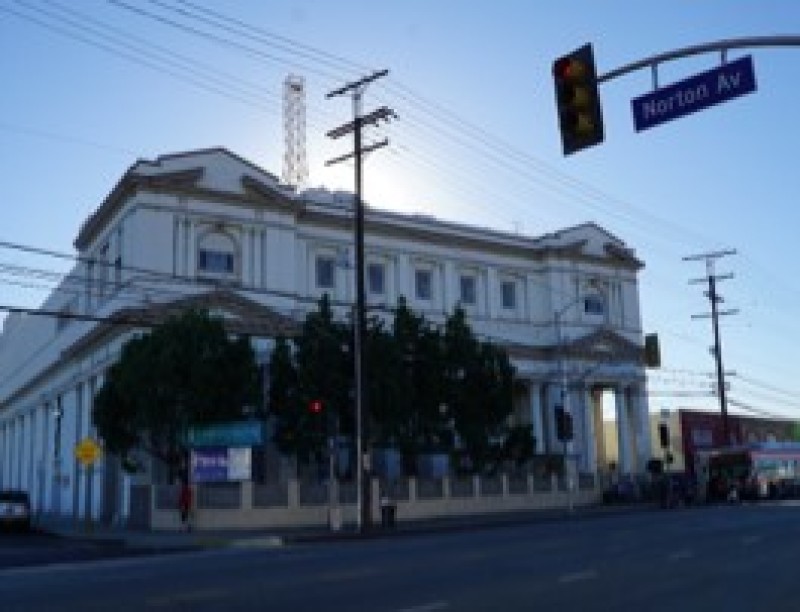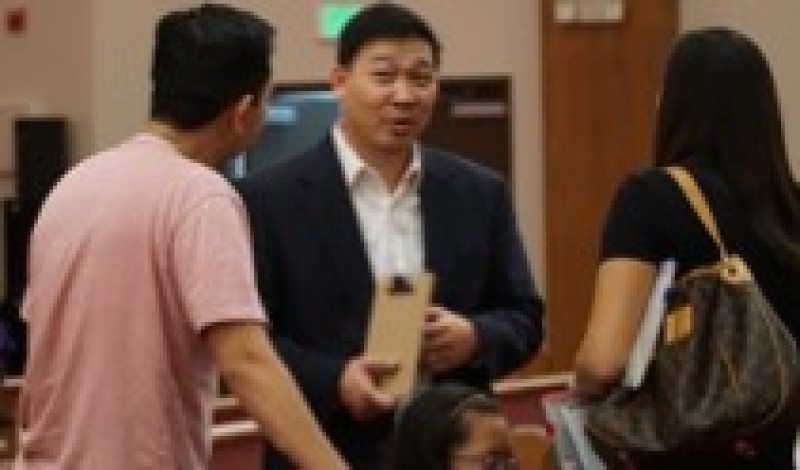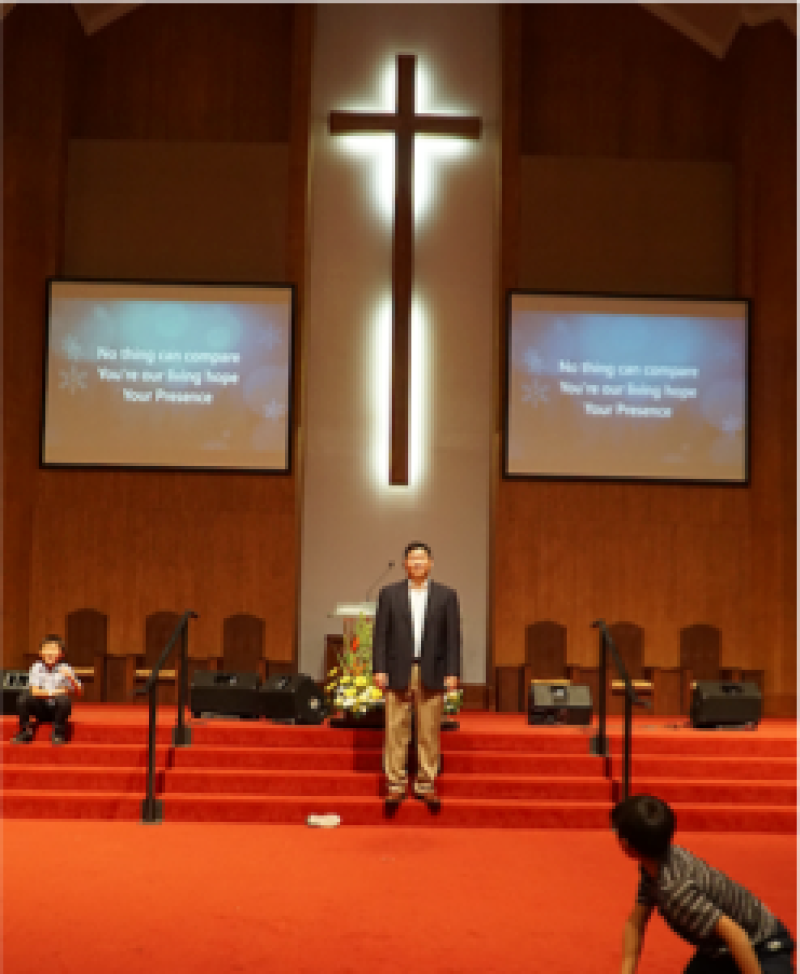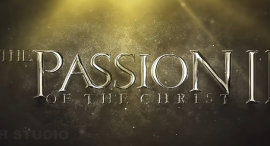
Ashley Kim watches over her two small kids as they scamper around the back pews of Living Faith Presbyterian, a church that sits on Pico Boulevard on the edge of Koreatown. The 35-year-old second-generation Korean American says that she has always gone to the same church as her parents, but this isn't technically true.
Her church, Living Faith, holds its English language services in the same sanctuary as The Way Presbyterian Church, which holds their services in Korean. They may share the same space, but Living Faith divested from The Way in 2012. Separated by language, the two churches represent the divide between first and second generation immigrants, and what may work for the first generation doesn't always translate to the second.
Kim's parents attend the 11:00 a.m. Korean language service; Kim, her husband, and their two kids attend the 1:00 p.m. English language service. She greets her parents in the narthex (the church lobby) as she and her family wait for their service to start.
"Just in the past few months, we started trying to have lunch with them because now we have little ones and they love seeing grandma and grandpa," Kim says.
Acclimating to a new country can be both frightening and confusing. Religious institutions have long been landing pads for immigrants seeking a familiar foothold in an unfamiliar land. Korean churches are no different. But as first generations of immigrants die out, and second-generations want services in English, when does a Korean Presbyterian church become just a Presbyterian church?
Andrew Park, 41, the lead pastor for Living Faith Presbyterian Church, isn't preaching this Sunday. Instead, he is seated with his family in the front row, watching as Aaron Sunu, the assistant pastor, handles the sermon.

After his congregants leave, Park carefully considers the tension between filling the needs of different generations and staying true to one's beginnings.
"We come out of an immigrant church. We started out Korean American and we should not necessarily be ashamed of that; ashamed that so many of us in our congregation are Korean American, second generation," Park says.
He believes that there is a balance between attracting non-Koreans and honoring the roots of their immigrant story.
"There are some people who think, 'we need to be diverse right now.' And I think that is something that we should be longing for and praying for, but not at the point where you are insecure or ashamed that, right now, [the congregation is] mostly Korean American. I think that's ok...that's our story as a church," Park says.
Aaron Sunu, the assistant pastor, agrees that becoming more than just a Korean immigrant church will take time and could create friction amongst its members.
"Those who desire to "stay true"... need to stay faithful in preaching the gospel because the gospel surpasses all cultural, generational, and demographic boundaries... the church can also make sure there aren't any explicit Korean words or references being used in the service or ministry, which would alienate those who don't understand," Sunu says.
Park acknowledges that ethnic churches like his have a long road to go to seem welcoming to non-Koreans. Not only is the majority of the church's signage in Korean, but the majority of its members are as well. Non-Koreans may feel like interlopers, that they are in a space that is not for them.
"It's going to make it more challenging [to become] more diverse, this being our starting point," Park says.
Living Faith started out as the English service for The Way. Park describes their old relationship as if they were a department underneath the larger Korean church, the same way the State of California is a part of the United States. Over time, they realized their need for independence, unable to make major decisions without approval from the Session (a group of elders from the Way). Park alludes to an incident where a missionary from Living Faith needed to be "disciplined," but it was up to the Session, many of whom didn't know this missionary or his background.
"We had to meet with the Session, keep them updated on the situation so that they could make thoughtful, well-informed decisions. But we found that even meeting together was difficult since they were so busy with their own congregation... we couldn't officially move forward without The Way Church's Session's approval and actions," Park says.
Park feels that Living Faith's relationship with The Way is friendly, and although The Way never asked for rent, Living Faith pays a nominal fee for use of the church. Park sees this as tacit support for his congregation from The Way.

The support is necessary-Ashley Kim and her parents aren't they only ones with different generations attending different services. Pastor Park says that a handful of families are split between services.
Like many of his followers, Park's parents immigrated from South Korea in the 1960's. After making their way to Sacramento, California, his parents spoke English to Andrew growing up-he laughs as he mentions that he can't speak Korean.
Park believes that because there is less of a language barrier with his English service, over time his church will become more diverse. But he also feels that it's important to honor the Korean immigrant story.
As Park and his congregation move away from their heritage as an immigrant church, they face the challenges of a more diverse future. Like all immigrants, they'll have to answer the question of how much of your motherland do you bring with you and how much do you leave at the church door

















